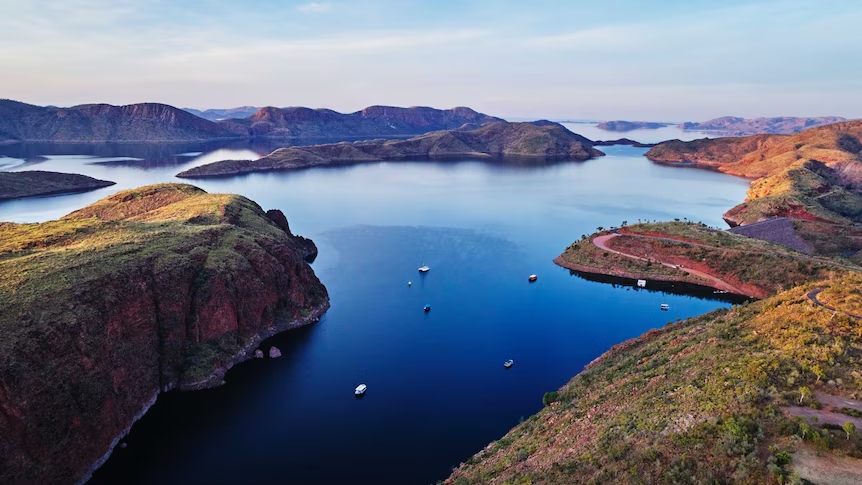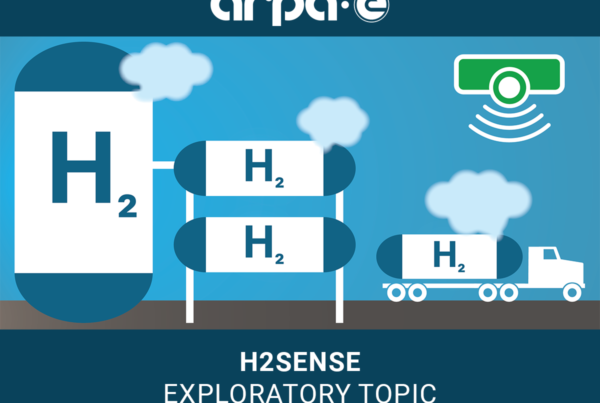
- In short: The federal government has committed $1.6 million towards a feasibility study for one of Australia’s first large scale green hydrogen projects in the Kimberley.
- The project is the first of its kind to have a majority traditional owner stake.
- Where to from here? The feasibility study will attempt to work out how best to move the project forward, and start the first steps towards its construction.
A billion-dollar clean energy project that could become Australia’s biggest green hydrogen producer has been given federal government backing, in the form of a $1.6 million cash injection to see if the project can live up to its potential.
The East Kimberley Clean Energy Project is earmarked at around $3 billion, and will involve the construction of a giant 900 megawatt solar farm at Lake Argyle near Kununurra, around 3,000 kilometres north of Perth.
The federal government announced on Tuesday the project would be given the modest cash injection to go towards a feasibility study, through its Australian Renewable Energy Agency (ARENA) funding.
Project could contribute to 80 per cent of world’s net-zero goal
The feasibility study will attempt to determine the operation of the project, which will use the Kimberley’s hot weather and fresh water to create electricity, which would be turned into green hydrogen.
It would then be piped north to the port of Wyndham, where the gas would be converted to ammonia — a key ingredient in fertilisers and explosives — and shipped overseas.
The project is one of dozens around the world attempting to hit a goal set by the International Energy Agency in 2021, which found a net-zero world would require 306 million tonnes of green hydrogen to be produced every year by 2050.
If successful, this project would be one of the world’s largest renewable hydrogen and ammonia production facilities and would create around 250,000 tonnes per annum.
ARENA chief executive Darren Miller said the cash was an important sign the federal government was backing the project.
“The energy transition and a global hydrogen race are well under way,” he said.
Mr Miller said it also set the tone for future clean energy projects constructed on Australian soil, with a first-of-its-kind partnership between climate change investment company Pollination, and traditional owners.
East Kimberley traditional owners, the Balanggarra people and Miriuwung Gajerrong people, are working with the Kimberley Land Council to have a majority stake in the project.
“ARENA is working with Aboriginal Clean Energy Partnerships to explore how First Nations communities can have a greater say and a greater stake in Australia’s renewable hydrogen ambitions,” he said.
“This project will pave the way for First Nations-led renewable energy developments and ARENA will be working to ensure the lessons we learn from East Kimberley inform future projects.”
Pollination head of projects Rob Grant said having traditional owners on board significantly ‘de-risked’ the project.
“[It will] make it faster, smoother and more attractive for investment,” he said.
“ARENA’s show of confidence in the project and the partnership is an important step for processing what will be a development of national significance.”
Traditional owners given new level of control
Kimberley Land Council chief executive Tyronne Garstone said the funding signals hope for traditional owners of the region.
“We’re excited to be able to work with the whole of government to look at how we can do business differently on First Nations country,” he said.
“That’s really been the principle of how we’ve tried to secure this funding is to show that things need to change in order for traditional owners to really take ownership of these projects and have more equity in these projects.”
Mr Garstone said traditional owners will be heavily involved in the feasibility study.
“We’re ensuring from every part of the operational aspect to the actual design phase, traditional owners are de-risking the project for potential investors,” he said.
“We are showing that any investment that comes into this project is done to ensure that when signing off on all those critical ESG components.’
SOURCE: abc News
Read the most up to date Fuel Cell and Hydrogen Industry news at FuelCellsWorks




